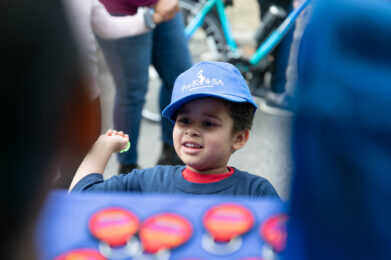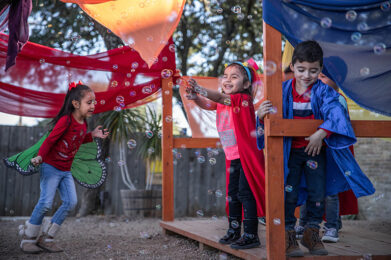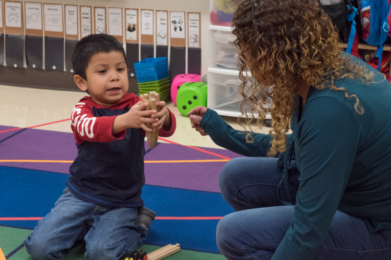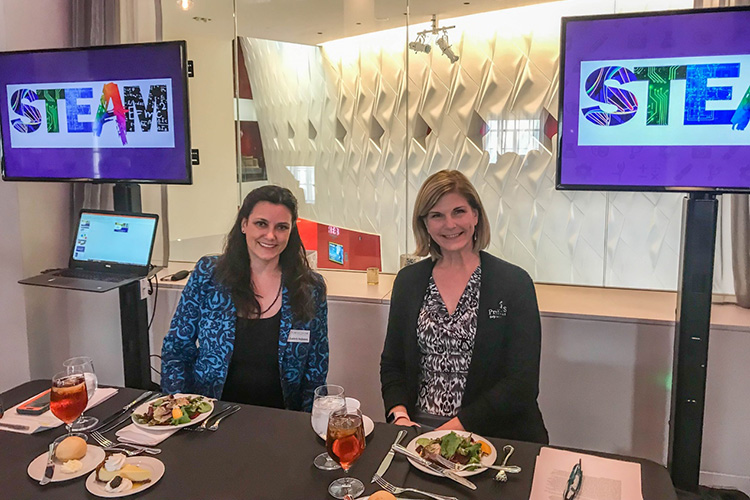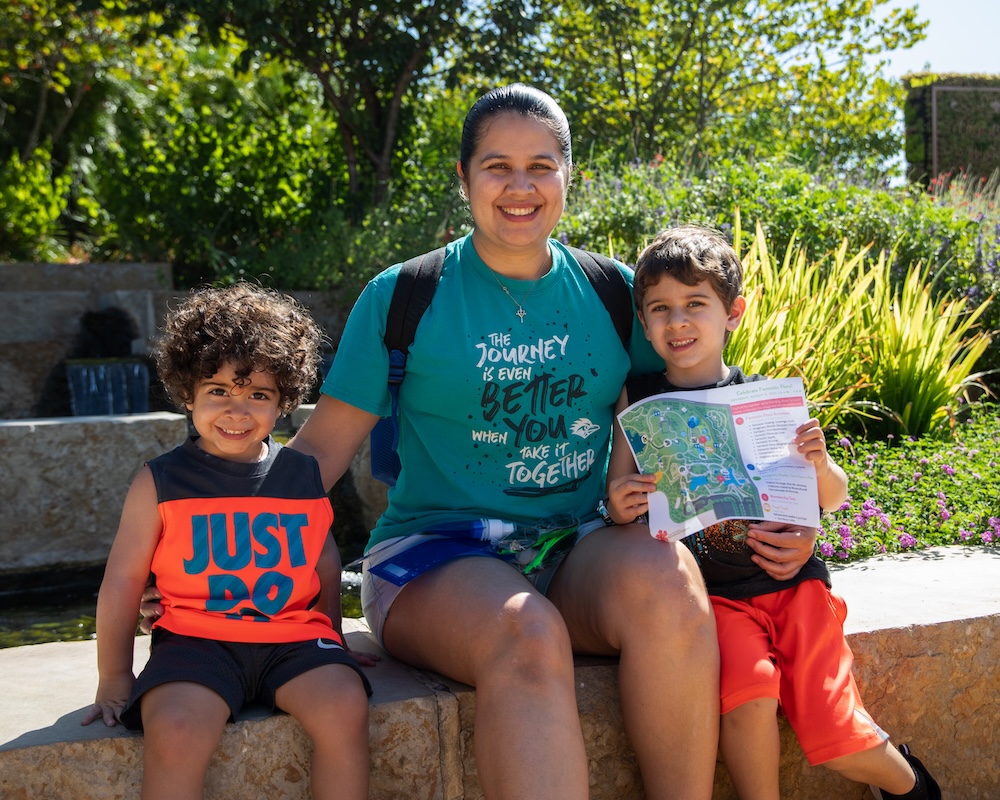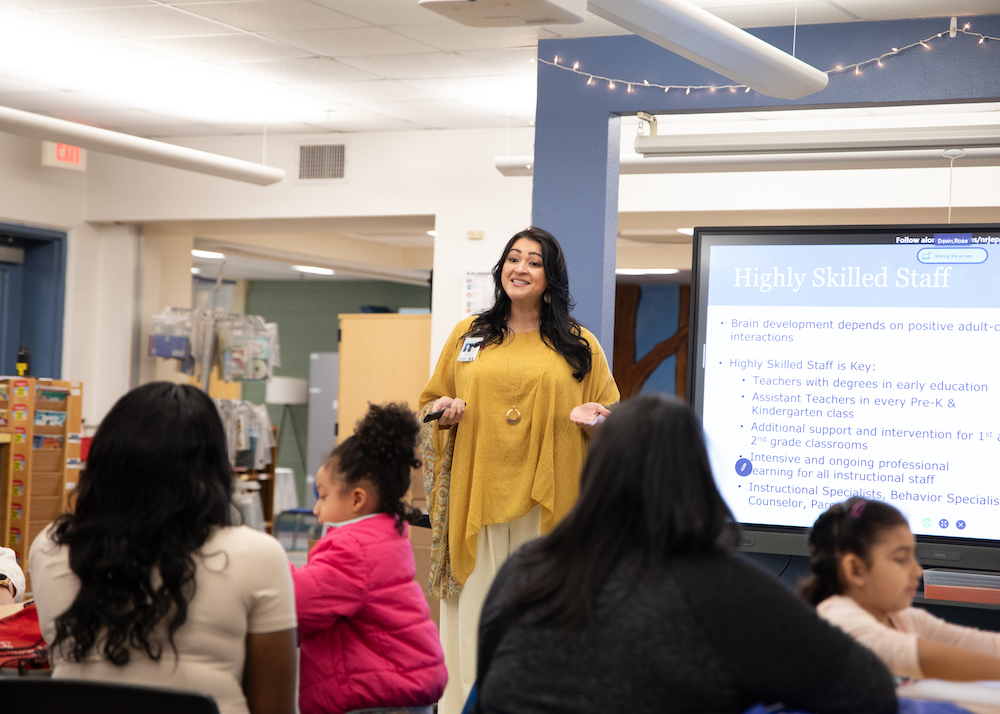Many tend to associate the arts with Picasso paintings or Shakespearean plays. However, many don’t realize how impactful the arts can be in early childhood education.
On Tuesday, September 3, 2019, Dr. Sarah Baray, CEO of Pre-K 4 SA, and Dr. Kimberly Stephenson, director of education for The Tobin Center for the Performing Arts, discussed “The ‘A’ in STEAM: The role arts integration plays in San Antonio’s classrooms, community, and corporate culture.” Baray explained how Pre-K 4 SA integrates the arts into its curriculum.
During her presentation, there was an overview of the complexity of a child’s brain architecture. Children are born with endless possibilities, and their brains are prewired to allow them to learn anything. Children are capable of speaking any language or multiple languages, developing musical talents, or being facile with numbers.
“Over 90% of brain development occurs before the age of five,” said Baray. “This means that the way our brains will be structured for the rest of our lives is determined at a very early age.”
From the moment a child is born, his or her brain begins to strengthen some of those wires and eliminate others. Those pathways that are frequently stimulated through experiences and interactions get reinforced, while other paths that are seldom used will diminish.
For example, although children are born with the ability to speak any language, they initially learn only those languages that are spoken to them in their households. If children learn multiple languages early in life, it becomes easier for them to learn additional languages later in life because their brain already has strong pathways to support multilingualism. If children grow up only speaking one language, it’s more difficult to learn another language later in life because the brain is trying to build a new pathway when development is slower.
The human brain continues to develop until death. However, the rate of development slows down significantly as people continue to age. In the first five years of life, the brain makes one million neuronal connections every second. Thereafter, from the ages of six to 20, brain development slows down moderately and continues to do so throughout life.
“After the age of 20, our brain development happens at a snail’s pace in comparison to what happens in our early years,” said Baray. “We can still develop new pathways but it takes longer.”
The arts are essential to high-quality early learning not only because we want children to develop the brain architecture to support artistic talents and interests, but also because art is a language and a mode of expression.
Interestingly, art integration is not the norm in most schools today. Over the past 30 years, creativity and the arts have been removed from the K-12 education system. The arts have become an optional aspect and because they’ve been marginalized for the last two decades, children are losing their innovational edge.
For this reason, art integration is a critical tenet of the Pre-K 4 SA approach to high-quality early learning and forms part of one out of the four core curricular pillars. Pre-K 4 SA incorporates the Wolf Trap model into every classroom by inviting local artists to work with the children in creating original works of art.
Another way Pre-K 4 SA incorporates art into its curriculum is through their Gracias San Antonio: Children Are Citizens Project. The project begins in November with the children’s participation in a program-wide election to vote on a local non-profit to support for the academic year. Throughout the year, children and families engage in City Explorations with Pre-K 4 SA teachers by visiting different places around San Antonio as inspiration for pieces of art.
Pre-K 4 SA invites local artists to assist classrooms with the creation of authentic art pieces that express the children’s perspective of the city. More than 100 pieces of art are created and displayed in a public gallery to be auctioned to raise money for the local non-profit organization. Many who attend the annual Gracias showcase are amazed to see the wonderful pieces created by the minds and imaginations of young children.
Pre-K 4 SA strongly believes that by engaging students in art experiences at a young age, children more deeply develop their thinking and creativity, learning to express themselves in a variety of ways.
